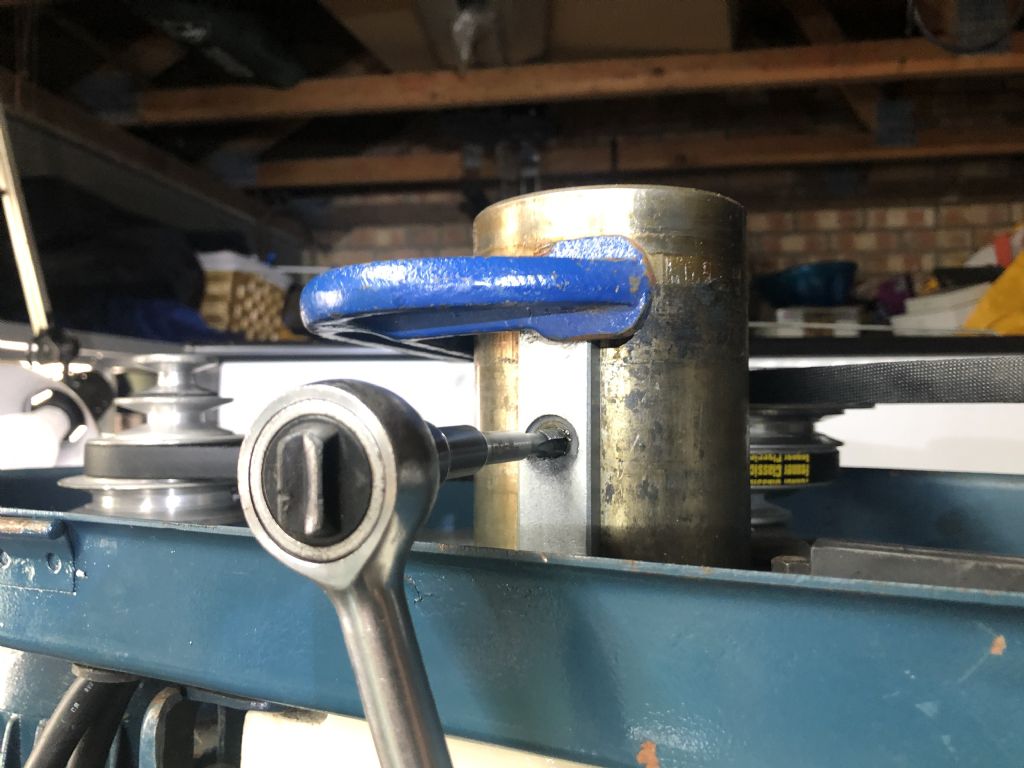The Edwin White 'improvement' appears to be a straightforward process capable of producing good results and greatly improve the head alignment problem with round column mills ..but… I found several elements of the work where I could have ended up with a poor outcome…
1/. The prospect of hand drilling four holes through the rack ( 11mm) and the column ( 17mm) and ensuring that the resultant hole was an accurate tapping size, then countersinking those holes in the rack, troubled me.
I removed the rack and used the mill to pre-drill two 6.6mm holes ( smaller than recommended for 8mm threads ) top and bottom ( 40mm apart ) and countersink them.
How did I do that when there was no rack on the mill I hear you ask..? Support the spindle/head on blocks of wood on the table before removing the rack, lock the head clamps and then use the quill control to raise or lower it, ( it is heavy..! )
I then had a pre-drilled rack which also acted as a guide for the holes I needed to hand drill in the column.
I ended up with very tight threads and good countersinks.
2/. My mill stand was actually 0.6 degrees off the horizontal so I had to incline my laser 'target ' by the same amount and I used an electronic gauge to do that accurately. ( Thanks to old mart for the ' heads up' on that. )
3/. The next, crucial , stage is positioning the head before drilling/tapping holes in the column and I very nearly made a serious mistake here… !
I drilled and tapped the lower of the four holes in the column and screwed the rack into position. I put the head into its lowest position and aligned the laser on target. I then raised the head to its highest position, moved it to align the laser/ target and prepared to drill / tap the crucial top hole.
BUT… somehow ….I noticed that when I moved the head up the rack, the rack did not appear to move at all… ? I would have expected the upward movement of the head to 'shove' the rack across as it went higher and it did not…???
There was a a 1.63mm gap between the head casting and the rack, which I was able to measure using feeler gauge blades and I then used those blades to make a shim to correct the problem. I recommend that everyone does this first. Edwin white uses a shim but appears to do it last…?
More to follow later
Terry Turner 2.





